Samosas are deep fried, spiced pastry snacks that are very famous in India, East Asia and are now rapidly gaining popularity in Africa, especially the west (Nigeria) and the east (Kenya). This is due to the increase in Indian immigrants.
The samosas in this recipe are quick and easy to make and a great way to utilise left over flatbreads or even tortilla wraps you might have lying around in your cupboards.
Traditionally, samosas use garden peas but here the pea choice is pigeon pea – a sustainable and drought resistant pea. It is imperative to utilise such vegetables to help sustain a bio-diverse ecosystem and better the planet.
Pigeon peas can be found tinned or dried in your local African shop, or world food section at most major supermarkets.
Makes 8 samosas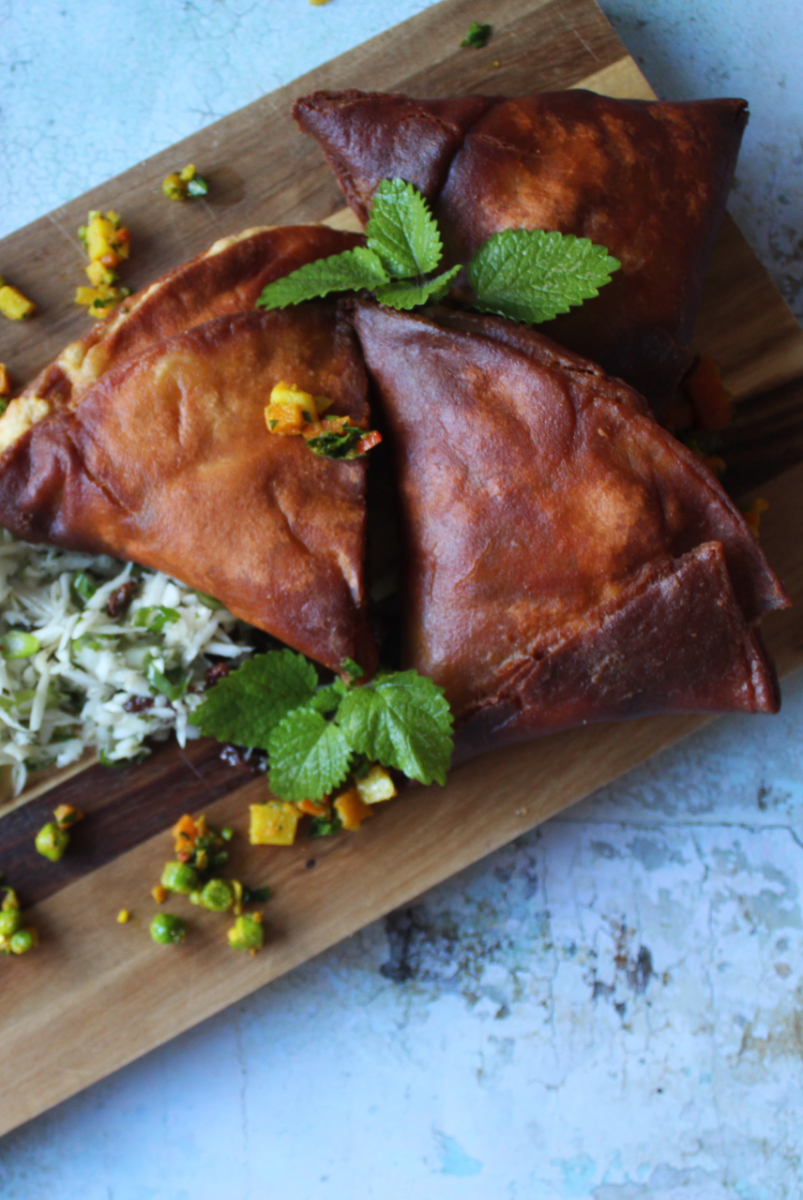
Prep time: 15 mins
Cooking time: 1 hour 17 mins, plus cooling
Total time: 1 hour 32 mins
Ingredients
Stage 1 – Soak raisins
- 100g raisins
- 200ml water
- Juice of ½ a lime
Stage 2 – Filling
- 1/2 red onion – diced
- 1 medium potato – diced
- 1 small carrot – diced
- 150 g pigeon pea (if unavailable, use garden peas) – drained and washed
- 2 cloves garlic – minced
- 1/2 tsp salt
- 1 tsp curry powder
- 50 g chopped parsley
- Salt to taste
- 2 tbsp vegetable oil
- 1 red chilli – minced (optional)
Stage 3 – Mixed cabbage
- 1/4 white cabbage
- 4 spring onions
- soaked raisins
- 50g mint
Stage 4 – Dressing
- 1/2 lime
- 100 ml olive oil
- pinch of salt
- pinch of black pepper
Stage 5 – Flour glue recipe
- 120 g plain flour
- 60 ml water
- ½ tsp salt
Stage 6 – Wrapping samosas
- flatbreads or tortilla wraps x 4 individuals
Method
1. Soak the raisins in water and lime juice for a minimum 1 hour to re-hydrate them. Put aside.
2. Prep stage 2.
3. In a large pan, add 2 tbsp vegetable oil on medium – low heat, place all ingredients from stage 2 (minus parsley) into pan and cook until the potato softens (approx. 15 minutes). Ensure to keep mixing so potatoes don’t stick to the bottom of the pan. Once cooked place parsley in and mix through and allow to cool down and put to one side.
4. Using a grater, grate the white cabbage and place in a large bowl.
5. Prep the rest of the ingredients in stage 3 and combine with the white cabbage.
6. Combine stage 4 for the dressing and put to one side. Do not dress the salad until it is ready to serve.
7. Mix ingredients together in stage 5 to make flour glue to glue the samosa together later. Once mixed and lump free place to one side.
8. Stage 6 – wrapping the samosas:
- Cut your tortilla in half
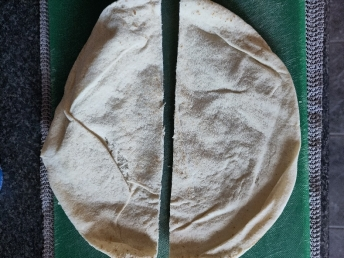
- Using your flour glue and a pastry brush/spoon, spread a thin strip to the middle of the wrap, then again to the edge at a 45 degree angle (see image for reference).
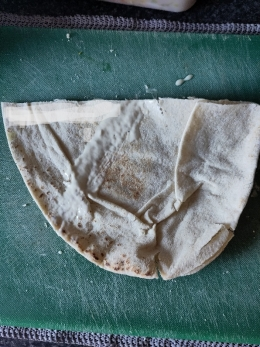
- Fold the dry corner onto the glued strip as shown below.
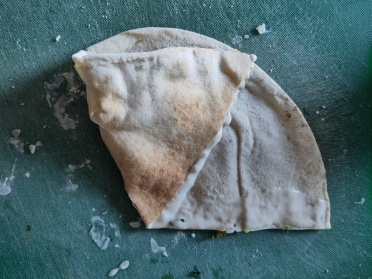
- Fold the remaining exposed edge to the middle of the folded side to form a cone.
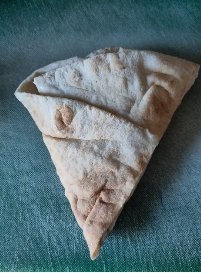
- Place your cone in a cup or mug to hold its shape and allow to dry for 2 minutes. Once 2 minutes has passed, add 1.5 tbsp of your cooled samosa filling.
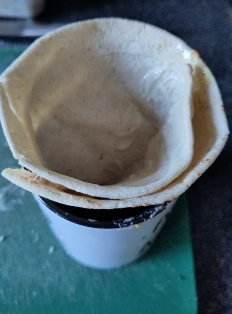
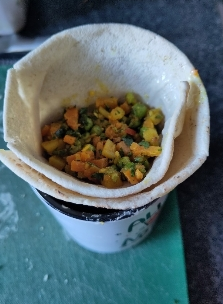
- Use the flour glue to seal the top, pressing the edges together and holding for a few seconds to ease adhesion. Put to one side and allow the glue to dry for 2 minutes before frying. Repeat this process until your filling/wrappers run out.
9. Preheat the oil to 170 °C in a large wok or pan and deep fry the samosas until golden brown, approx. 1–2 minutes (if you don’t have a thermometer, heat up the oil and drop in a couple of pieces of bread, if the bread sizzles quickly the oil is hot enough). Ensure not to over crowd the pan and be careful dropping the dough into the hot oil.
10. Remove from the pan using a spider/slotted spoon. Place the samosa on kitchen towel or a clean, dry tea towel to soak up excess oil and allow to cool completely before serving. The samosas will be hard when hot, but will soften once cooled. Allow to cool for 8–10 minutes before eating.
11. Once cooled, dress the salad, serve and enjoy.

Recipe written and created by Ngwafu Tansie. Founder of gwafuvegan. As a black queer chef, it's fundamental for me to represent within the hospitality industry and showcase my culture. Inspiring younger people that you can be whatever you want to be if you put your mind to it.
Follow Ngwafu on Instagram and Facebook.
